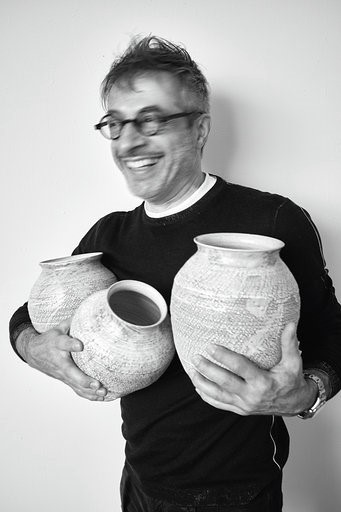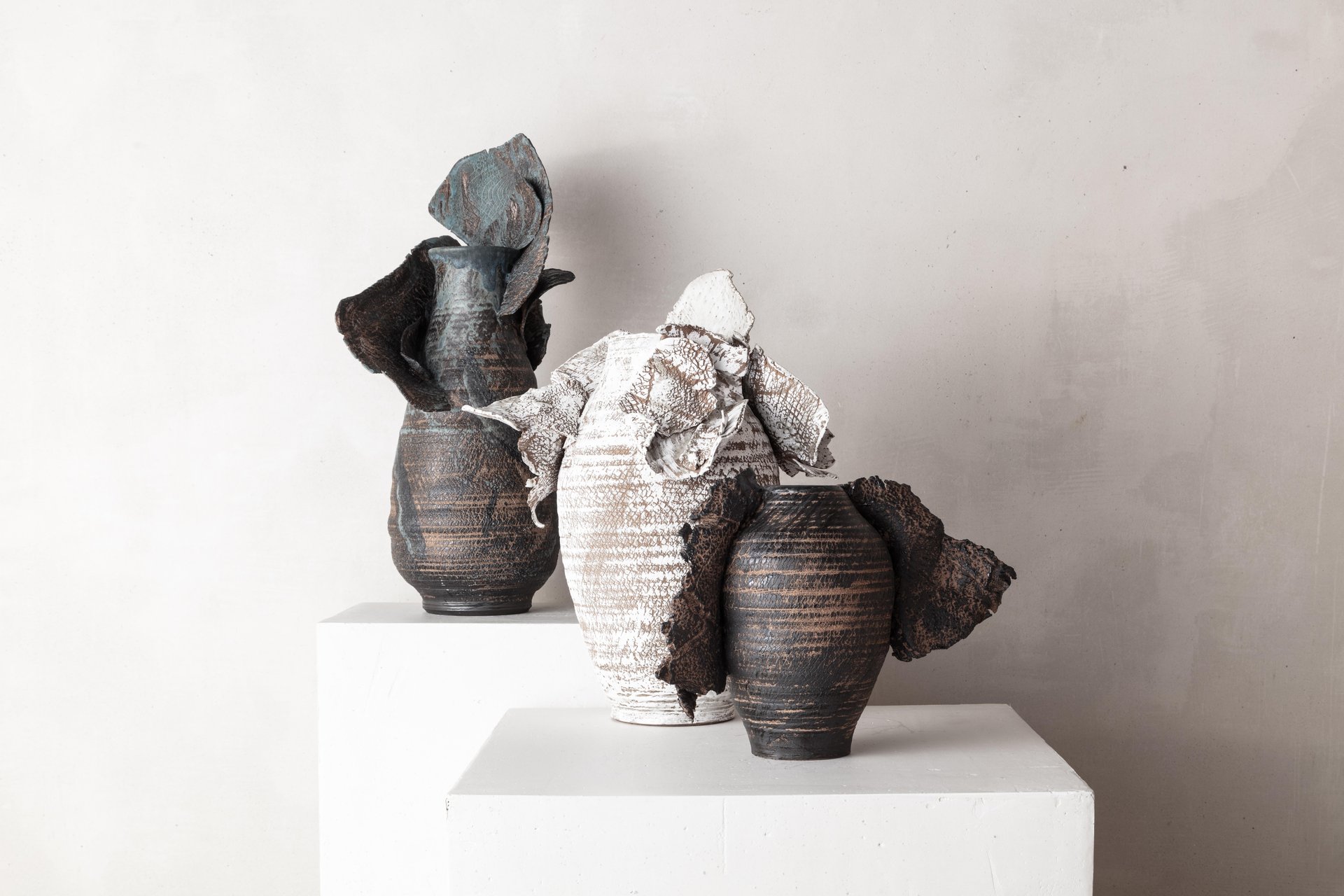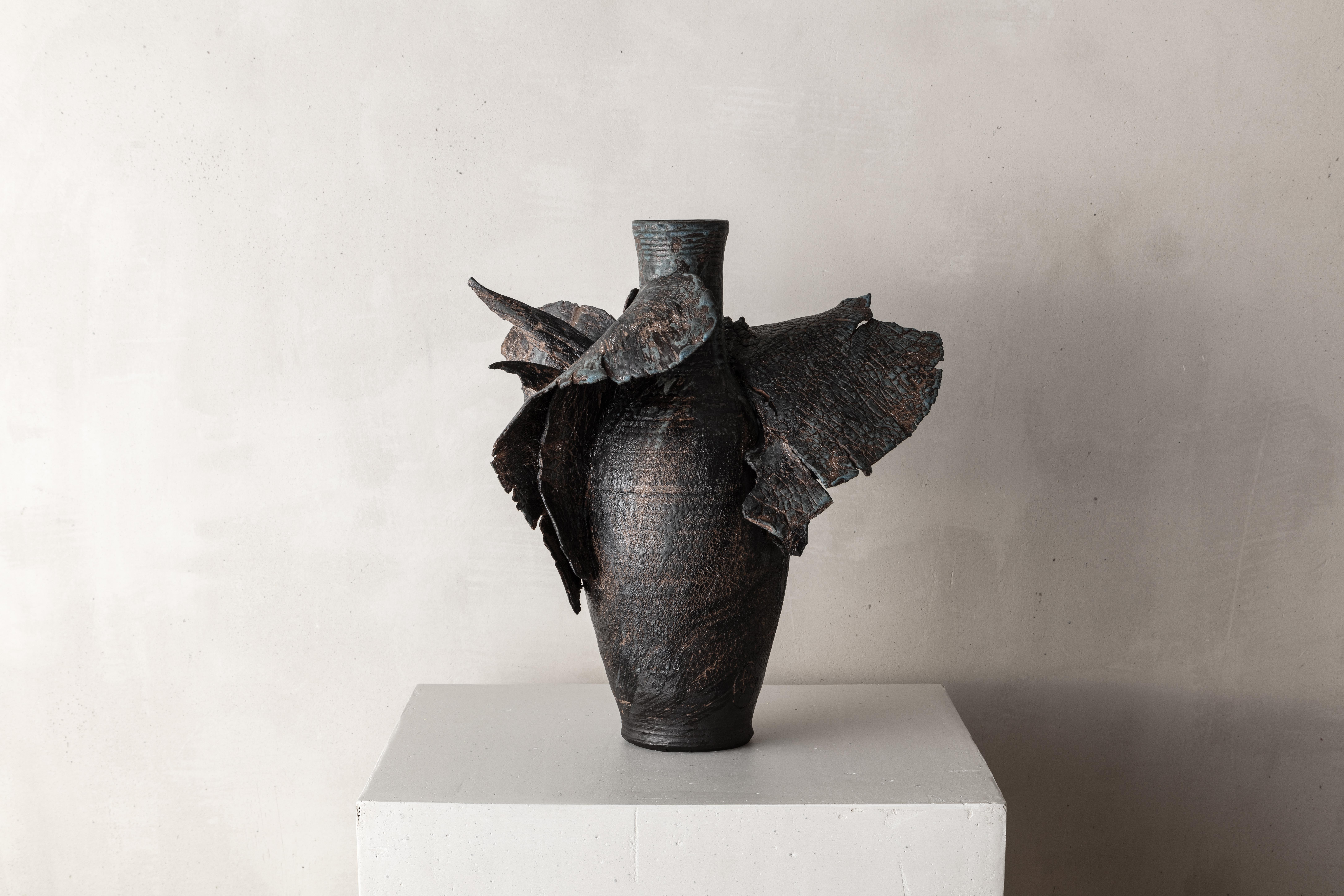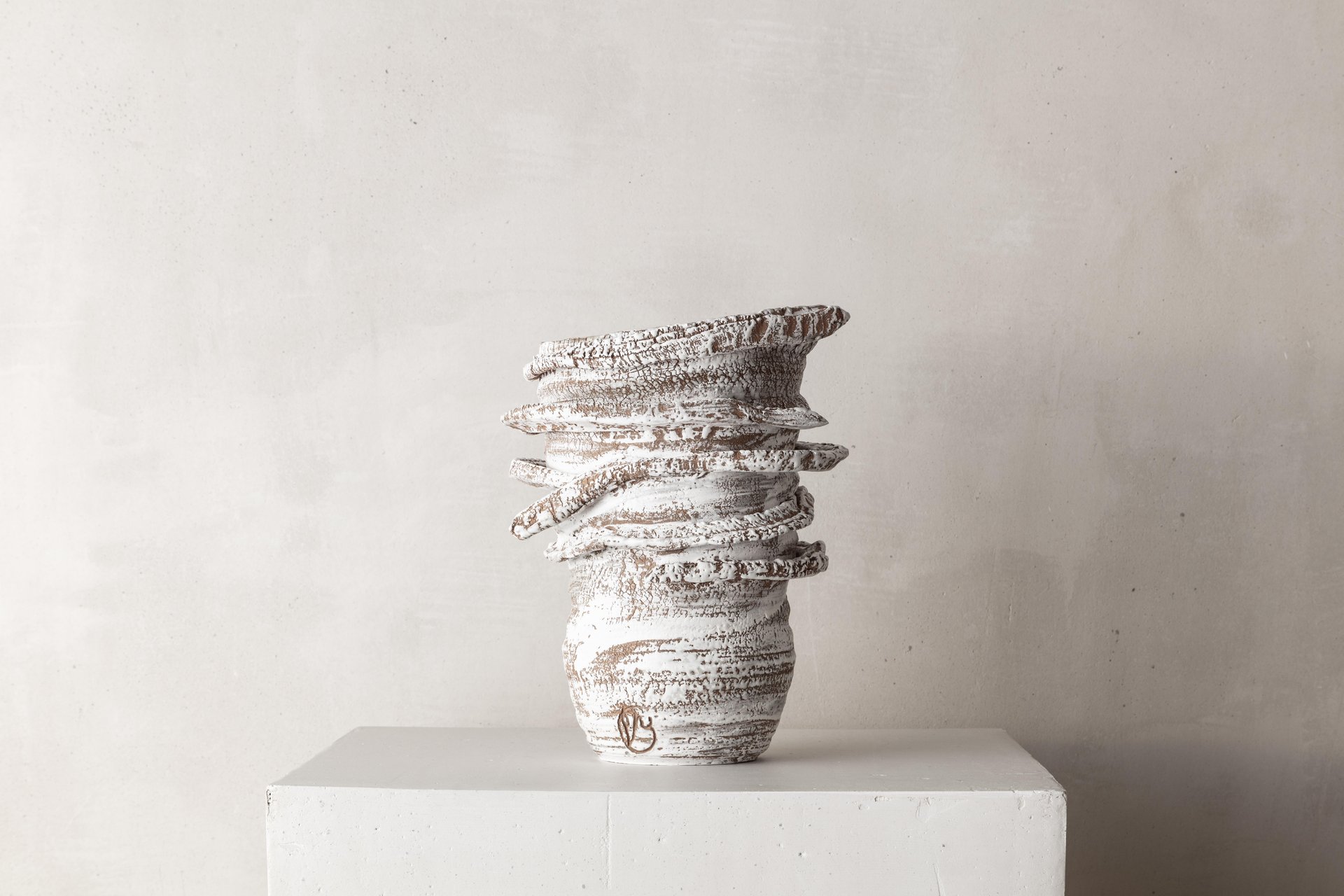How did your experience as a designer, especially your years working closely with Donna Karan, inform your aesthetic?
I have had a very privileged career, working at a time of enormous opportunity, here and in Italy and Paris— mentored by great talents and through incredible experiences, lots of travel, and research. My experiences as a designer taught me about “making”— I worked in the best knitwear factories, with the best fabric mills, in shoe and handbag factories, with great Indian embroidery houses, and with the old school drapers and tailors…[I was given] the opportunity to observe the techniques of couture. I am very curious by nature, and it was always important to me to learn as much as possible! I think I put all of this to great use working with Donna Karan, because honestly, very few designers have such a huge talent as Donna, who is also a natural talent. Because her instincts are so sharp and her experience so vast, it was a daily challenge to make things new, fresh, modern, interesting— from aspects like fit and proportion to color to fabric. I am forever grateful to have been given the opportunity to make great contributions, the result of perpetual movement forward. Donna has always been about modern expressions of movement, honoring the female form, functionality and elegance in the fast world. I imagine that intense exposure over 20 years rubbed off on me. Although we are at times symbiotic, we are each unique and quite different!
When and how did you discover ceramics? What do you feel when you create?
Because I am Capricorn and all earth and fire, ceramics seemed like a natural pursuit. And Greece has such an obvious rich ceramic tradition. So, in 2011, I started studying the wheel with a local potter during my summer vacations in Patmos, Greece, where I have a house. It wasn’t until Donna Karan [Collection] was closed in 2015 that I began more formal studies in New York.
I love the potter’s wheel, the feeling of centering and focus, the essential, eternal motion of the wheel itself. What I have learned and enjoyed is the satisfaction that results from making something totally myself. In ceramics, one works alone, and the finished piece is created by one’s own hands, and each choice one makes along the way to completion affects the ultimate work. In fashion, there is teamwork, the final piece is the result of collaborative efforts. I do believe my fashion design history has influenced my ceramics, both in the aesthetics of the pieces and the idea of the “collection…” When I was making these pieces, I often sensed I was sculpting with muslin or felt, [and] trying to achieve the suspension of clay as a “fabric.”
What do you hope people will feel and take away from CHTHONIC?
I like to believe it is all about personal emotion and connections to one’s inner self. So I hope people feel these vessels are alive, expressive, and convey secret histories. They are raw and refined, and lost in time. Although they are at times animalistic and haunting, I also see them as optimistic totems offering a vision of hope and rebirth.
Many of your industry friends showed their support and love for you at the opening, ie. Donna Karan, Patti Cohen, Bridget Foley, Etta Froio…what did you feel that night?
It was truly beautiful, I was jubilant! To see Etta after so many years was very moving. We met when I was designing with Carolyne Roehm, who was also at the opening. I felt tremendous respect for her, and her important contributions to fashion history, which of course I also feel about Bridget, and you as well quite frankly… I think it reminds me of what we all have shared and accomplished in the glory days of fashion— and it was fun!!! Donna and Patti are always like combustion and they ignite enthusiasm and wild energy! We are forever friends bonded by experiences. It was also a confirmation that we all move on and continue to find ways of making contributions.
Do you still design fashion? If not, what do you miss about it? What’s next for you?
Although I have not done “fashion consultancies” recently, I continue creating costumes for opera and dance with Karole Armitage, with whom I have collaborated for 21 years, and with Luca Veggetti, the Italian director/choreographer. Due to Covid, our projects in Tokyo and in Italy in 2021/22 have been delayed.
I truly love fashion; I love clothes too! What I really miss are the people, the collaborations, the dramas, the hysterics, the incredible beauty, the hair and makeup and the show! The total vision… That feeling of when it all comes together. And then— okay it’s finished, what’s next, onto the next! I actually did feel that after the opening of “CHTHONIC.”













